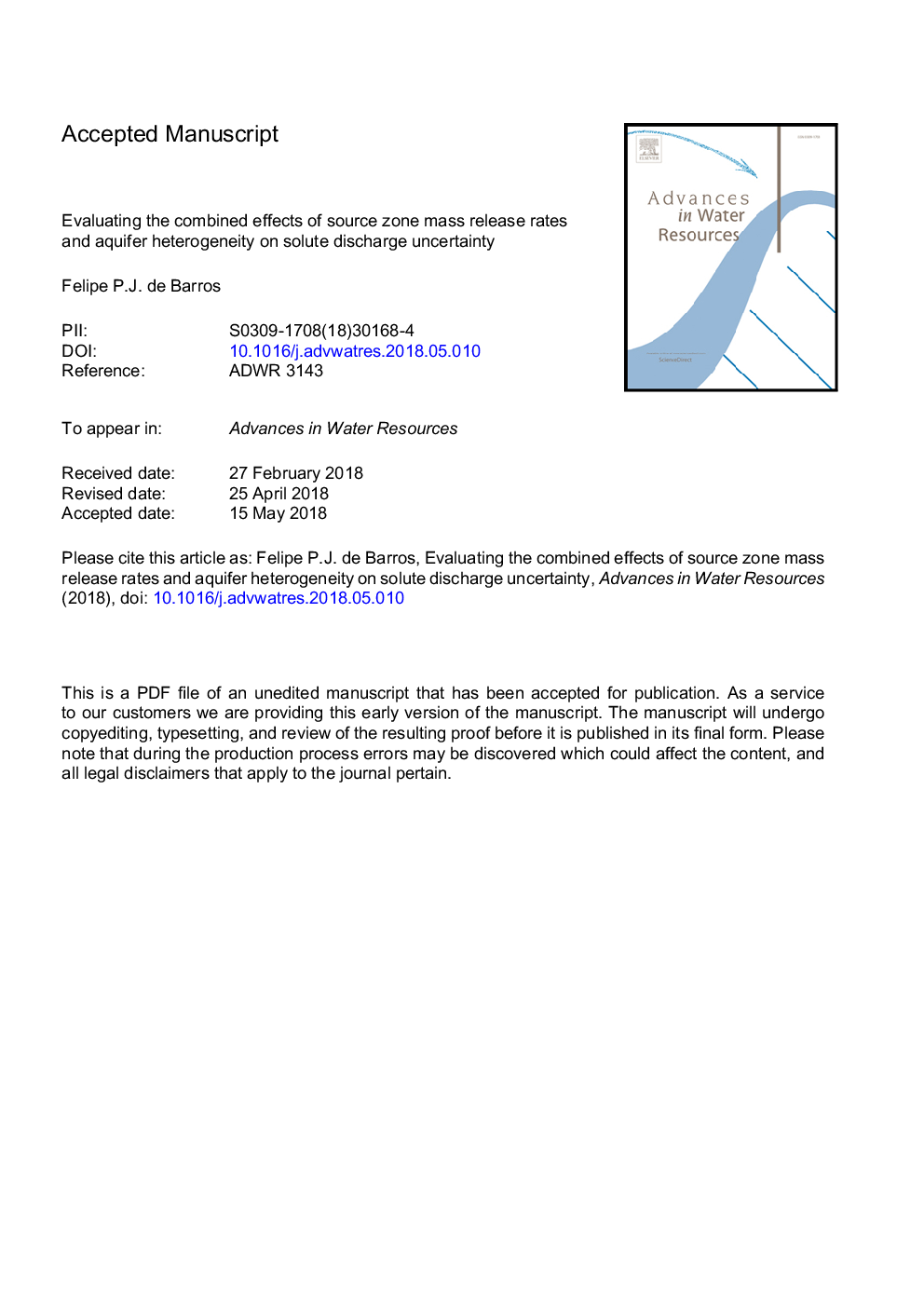| Article ID | Journal | Published Year | Pages | File Type |
|---|---|---|---|---|
| 8883282 | Advances in Water Resources | 2018 | 42 Pages |
Abstract
Quantifying the uncertainty in solute mass discharge at an environmentally sensitive location is key to assess the risks due to groundwater contamination. Solute mass fluxes are strongly affected by the spatial variability of hydrogeological properties as well as release conditions at the source zone. This paper provides a methodological framework to investigate the interaction between the ubiquitous heterogeneity of the hydraulic conductivity and the mass release rate at the source zone on the uncertainty of mass discharge. Through the use of perturbation theory, we derive analytical and semi-analytical expressions for the statistics of the solute mass discharge at a control plane in a three-dimensional aquifer while accounting for the solute mass release rates at the source. The derived solutions are limited to aquifers displaying low-to-mild heterogeneity. Results illustrate the significance of the source zone mass release rate in controlling the mass discharge uncertainty. The relative importance of the mass release rate on the mean solute discharge depends on the distance between the source and the control plane. On the other hand, we find that the solute release rate at the source zone has a strong impact on the variance of the mass discharge. Within a risk context, we also compute the peak mean discharge as a function of the parameters governing the spatial heterogeneity of the hydraulic conductivity field and mass release rates at the source zone. The proposed physically-based framework is application-oriented, computationally efficient and capable of propagating uncertainty from different parameters onto risk metrics. Furthermore, it can be used for preliminary screening purposes to guide site managers to perform system-level sensitivity analysis and better allocate resources.
Keywords
Related Topics
Physical Sciences and Engineering
Earth and Planetary Sciences
Earth-Surface Processes
Authors
Felipe P.J. de Barros,
